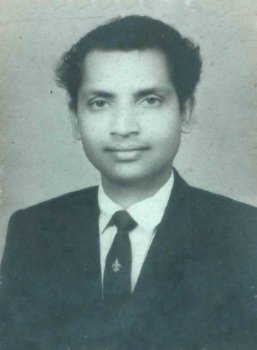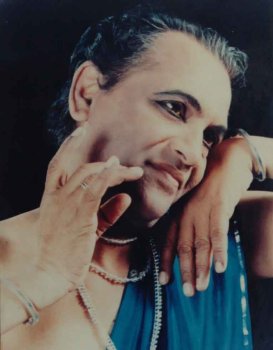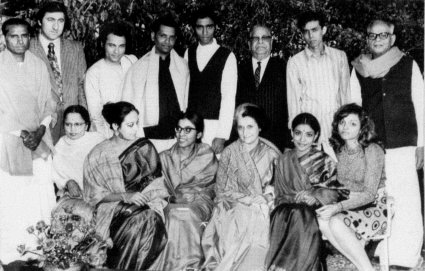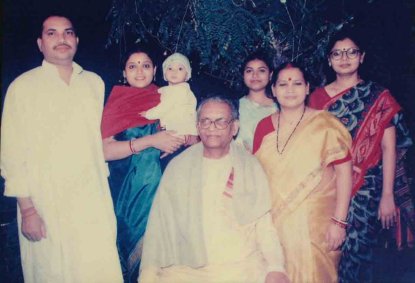 |
  |
 |
  |
Remembering Odissi Guru Harekrushna Behera - Dr. Sunil Kothari e-mail: sunilkothari1933@gmail.com Photos courtesy: Manoj Dash July 7, 2012   Guru Harekrushna Behera was my neighbour at Asiad Village. He had been ailing for past two years. On 24th June 2012, he passed away at All India Institute of Medical Sciences Hospital, New Delhi, in the morning. He was 81. Unfortunately I was away and could not attend his funeral. Two months ago, Shyamhari Chakra from Bhubaneswar, Manoj Dash (Munubhai), a well wisher of Harekrushna from Gurgaon and I went to have a detailed interview with guruji. Munubhai's daughter Prachee was studying Odissi from guruji and they used to meet often and also take care of him. Guruji was pleased to see me, as I had not seen him for a long time. Our association goes back to four decades. Shyamhari and Munubhai had met him earlier but he was not in a mood to tell his story. He was very depressed on account of his health and being unable to take classes, teach and compose. But we somehow managed to cheer him up. And he told us a few things, which were very disconcerting. The hardships he went through in his life indeed were heartbreaking. But he took it all in his stride. Harekrushna was born in village Buani of Odisha's Balasore District in 1938. He was trained in art of gotipua dance from the young age of eight by Ramahari Behera. Like his other contemporaries, he too joined Jatra party and toured all over Odisha, performing and learning various aspects of theatre. From Ramachandra Dey he took lessons in music and other traditional dance styles. He also mastered the Chhanda and Champu and was well versed in music. He joined the Nrutya Sangeet Kalamandir, Balasore, as a guru. It was in 1957 that he joined Kala Vikash Kendra to study Odissi further. At that time, Guru Kelucharan Mohapatra and Guru Mayadhar Raut were teaching there. Harekrushna took lessons under them also, though all of them had been trained in gotipua dance style. Seeing his industrious nature and desire to learn more, Babulal Doshi, who established and was in charge of Kala Vikash Kendra, sponsored him for studies at Natya Ballet Theatre in Delhi. In 1964, he received a grant from Sangeet Natak Akademi to study Kathak under the guidance of Pandit Birju Maharaj at Kathak Kendra, which was then a part of Bharatiya Kala Kendra and housed in their building. He also studied pakhavaj under Purushottam Das and thumri singing under Siddheshwari Devi. During his stay in Delhi, Harekrushna set up Nritya Niketan, the first ever school of Odissi dance in Delhi with the help of one Mr. Khosla. Harekrushna invited Guru Kelucharan Mohapatra, Guru Mayadhar Raut and Guru Surendranath Jena to teach Odissi at Nritya Niketan. This was a historic event when these major gurus from Odisha came to the capital and embarked upon training young dancers in Odissi. I remember having been to Nritya Niketan. At that time Madhavi Mudgal, Sonal Mansingh, Rani Karnaa, a foreigner by name Fredrique, Kum Kum Lal (nee Mathur), Priya Pawar, Radha Reddy, Aloka Panikar and few others were taking lessons in Odissi at Nritya Niketan. It was a big venture that Harekrushna had undertaken. I still have a booklet of Nritya Niketan in my dance collection. I specially mention this because many from young generation and readers within India and abroad, do not know what Harekrushna had visualized for Odissi dance in those years for its development and popularity. It was not an easy task to convince and bring Kelubabu, Mayadhar Raut, Surendranath Jena to Delhi. In a spirit of camaraderie he invited them to Delhi, keeping faith and full trust in all of them. Very few remember or like to remember this fact. Harekrushna with his basic philosophical attitude did not hold anything against anyone when they all went their own way. He was that type, a forgiving and simple person. Unfortunately, for several unpleasant reasons, the school was closed. Mr. Khosla, as per Harekrushna's explanation, did not pay the money for renting the place and he was let down badly. While telling the sad story, Harekrushna was very emotional and we realized the agony he had gone through. Guru-ma, his wife, also told us a few other stories of hardship, about little money to pay rent for accommodation, various tuitions guruji used to give, going on a cycle from place to place and managing somehow. When Kavita was born, they had little money and Harekrushna never extended his palm before anyone for monetary help. He managed with whatever he made from tuitions, which was not enough for living in Delhi, with complete support from his wife.  With Indira Gandhi, Sonal Mansingh & Madhavi Mudgal  Receiving award from Dr. Abdul Kalam It was in 1971 that he joined Gandharva Mahavidyalaya and taught there till 1979. Among Odissi exponents, Madhavi Mudgal has always acknowledged her debt to Harekrushna for training her in Odissi. Even when later on Guru Kelucharan taught at Gandharva Mahavidyalaya and she started training under him, she remained true to her basic humility and grateful to Harekrushna and was the first to come over to his residence on learning of his demise. Her relations with him were cordial and so were of Harekrushna and his family members. He also used to accompany leading dancers for their Odissi recitals. He accompanied Sonal Mansingh for her performances and they had a very memorable tour of Iran with musicians and among dancers was Madhavi Mudgal also. A memorable photograph was shown to us when Shyamhari and I were interviewing him, to tell us more about his life. He used to go to Yamini Krishnamurty's residence to give her practice in Odissi, as she had studied under Guru Pankaj Charan Das and also under Guru Kelucharan Mohapatra. And she wanted to continue her practice for which Harekrushna readily helped her. Paying glowing tributes to Harekrushna, Yamini praised him for his assistance and simple nature. There were no ego hassles. After leaving Gandharva Mahavidyalaya, Harekrushna started his own dance institution Odissi Kendra at his Asiad Village residence, and later on at Alaknanda and at Gurgaon, and started teaching a number of young aspirants. Gentle and soft spoken, he taught sincerely and if on some occasions classes were not taken by him, he would compensate by taking extra classes to reassure disciples that he did not want to short change them. Among his own three daughters, eldest Kavita received direct guidance from him and blossomed forth into a gifted dancer, keeping up her father's tradition and performing compositions. After marriage to Dwibedi, she received many opportunities to perform and brought fame and name to her father. The other two sisters Kaveri and Kalyani also studied under Harekrushna and they carry on his tradition. Some of his disciples came from abroad and some went abroad. They remained in touch with him. For silver jubilee celebrations of Odissi Kendra, a special festival was organized and many of his disciples came together to felicitate him. Munubhai took several photographs for documentation. Harekrushna had received Sangeet Natak Akademi award from Odisha and All India Critics' Association, Kolkata had honoured him with an award. Central Sangeet Natak Akademi Award came rather late to him, but he was happy that finally his services were recognized by the Akademi. He lived a simple, frugal life. In the final years when he was bedridden, he was much worried about the marriage of his two daughters. But since both are teaching, they are independent. He started Guru Harekrushna Behera College of Art and Culture in his village, paying salaries to the teachers. He spent his savings on that project dear to his heart. However, the financial burden was taxing him and his poor health caused him much worry. Also, after having spent 45 years in Delhi, he was longing to go back to his village.  With family 
Having known Harekrushna for many years, I always found him warm and affectionate. He respected me for my researches and love for Odissi dance. When my book on Odissi was published by Marg Publications in 1990, he blessed me for my work. Our friendship was deep and I valued his friendship. Whenever I wanted to clarify any doubt about Odissi, I would go to him and he would give information readily. His daughter Kavita also kept in touch with him constantly and gave me information about Guruji and his latest work. It was becoming increasingly difficult for him to move but sometimes he managed to attend some shows. When Harekrushna was admitted to AIIMS Hospital, in order to cheer him up the doctor said, "Guruji, please do not worry, you are OK." He responded lightly with a sense of humour, "Doctor saab, this time I am not going back. I have bought the ticket to leave now. I am ready to go!" and after an hour or so, he quietly passed away. These were auspicious Rath Jatra days and as Guru–ma said, he merged with Lord Jagannath. He was a most uncomplicated and simple guru and those who knew him admired him and remained loyal to him. With his passing away, now few gurus of his stature are left in Odissi world.  Dr. Sunil Kothari is dance historian, scholar, author and a renowned dance critic. He is Vice President of World Dance Alliance Asia Pacific India chapter, based in New Delhi. He is honored by the President of India with Padma Shri, Sangeet Natak Akademi award and Senior Critic Award from Dance Critics Association, NYC. He is a regular contributor to www.narthaki.com, the roving critic for monthly magazine Sruti and is a contributing editor of Nartanam for the past 11 years. Post your comments Please provide your name and email id along with your comment. All appropriate comments posted with name and email id in the blog will also be featured in the site. |